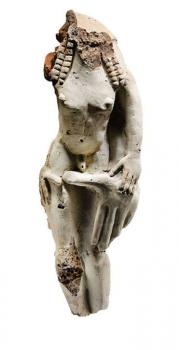American Journal of Archaeology | The Journal of the Archaeological Institute of America
You are here
Phalaris: Literary Myth or Historical Reality? Reassessing Archaic Akragas
July 2012 (116.3)
Phalaris: Literary Myth or Historical Reality? Reassessing Archaic Akragas
This article offers as a case study a comprehensive scrutiny of literary sources and archaeological data for the first tyranny of Phalaris at Akragas (571/0–555/4 B.C.E.). Literary sources report that during Phalaris’ tyranny, there was a period of prosperity characterized by a building program (temples, fortifications), territorial expansion up to the northern coast of Sicily, and dominion over the Sikans, just a decade after the foundation of Akragas. Scholars have adopted a generally positivist approach in reading these sources, in reconstructing the historical figure of Phalaris, and in outlining the artistic and cultural frame of Akragas during the second quarter of the sixth century B.C.E. From a methodological point of view, this case study sheds light on the unbalanced relationship between literary/historiographical sources and archaeological evidence in the reconstruction of archaic Akragas. I present an updated view of the artistic, architectural, and cultural context of archaic Akragas and draw a new picture of the geopolitical boundaries of the polis that is supported by archaeological evidence.
Phalaris: Literary Myth or Historical Reality? Reassessing Archaic Akragas
By Gianfranco Adornato
American Journal of Archaeology Vol. 116, No. 3 (July 2012), pp. 483–506
DOI: 10.3764/aja.116.3.0483
© 2012 Archaeological Institute of America


